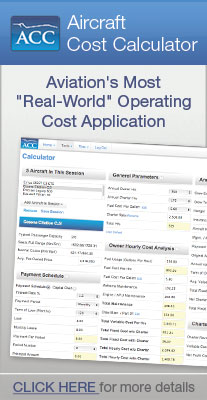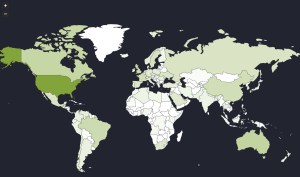Podcast: Play in new window | Download
The airplane is the most visible aspect of business aviation. And, accessing the airplane via charter, fractional ownership, or full ownership is where you’ll make the largest financial investments via acquisition and/or operating costs and management structure.
Understanding your options here will reduce your investment risk and maximize the product/service value that you’re paying for… “Less headwind, smoother ride.” Helping us today, Mr. John Sheehan – LinkedIn
John served as a USN Commander (20 years carrier / anti-submarine warfare), earned an MBA (Pepperdine), and for over 35 years has held roles with AOPA, IBAC, NBAA (author/speaker), including 20 years consulting with corporate and business aviation operators.
He’s the author of “Business and Corporate Aviation Management (2nd edition)” a must-read text for business aviation principals, employers, and employees on establishing and running business aviation operations including:
- The business airplane advantage, choosing aircraft, asset acquisition
- Establishing and managing all types of on-demand air travel options
- Regulations, scheduling, finances, safety, maintenance
- Keeping flight ops safe, legal, effective, and efficient
Match Aircraft To Mission
When answering the question, “What are the on-demand options?” we need to first answer the following:
- What do I want my on-demand air transportation to solve? Bouncing twice a week two hundred miles to New York dictates a different solution than quarterly road shows to investors or properties scattered across a continent or hemisphere.
- What are my on-demand air transportation needs? Traveling solo to small airports requires a different asset answer than moving ten-person teams from large cities to rural towns.
- How much business aircraft control (1=low, 10=high) makes sense? Should the asset be rented, fractionally purchased, or wholly owned. Should aircraft / flight department management be hired or outsourced via. an aircraft management company.
Determining the top one, two, or three “important items” for an on-demand travel solution helps answer the question, “What business aircraft and delivery method makes the most sense?”
John’s book, “Business and Corporate Aviation Management” provides a needs analysis outline. As he mentions in the episode, too many people rush into aircraft usage without really knowing what they want. The result? More headwind, rougher ride.
Chartering Business Jets
Charter (renting) a business jet might solve the “low use” or “beginner” business aircraft user. It’s the least expensive entry into on-demand private air travel allowing one to meet minimal travel needs and/or sample business aviation first hand. A charter company will supply an aircraft and crew… both governed by FAA regulations.
Confirming a charter operator’s certification and service is important. How? Ask for disclosures listing the Air Carrier Operating Certificate Number, check with auditors AR/GUS and/or Wyvern. Finally, ask trusted peers, who have hired specific charter companies, about their experience and recommendation.
If annual flight hours surpass 100/150, consider…
Business Aircraft Fractional Ownership
If charter flying becomes excessive, fractional ownership begins to make sense up to 250/300 annual flight hours. Here, you purchase part of an airplane (1/16th and up). It’s a natural progression giving you more on-demand air travel options: short notice lift almost anywhere, VIP treatment (you’re treated like a long-term owner, not a short-term customer), and access to various aircraft based on need. If you’re traveling alone from Phoenix to L.A., you can book a small jet. If you’re flying with five associates from Seattle to London, you can book a large jet. More control, more flexibility accompanied by more cost, too.
Fractional jet ownership is also useful for tailoring or supplementing an aircraft fleet. For example, fully owned airplanes (discussed next) might be in maintenance or double booked. In this case, a fractional ownership share can solve the short-term travel need.
Or, an entire lift solution might be met through fractional ownership. Take, for example, the owner/company that has weekly short-haul travel needs (Chicago to New York) with two to four people while simultaneously requiring top executives travel to global locations in Dubai and Sydney. The answer might involve three fractional shares: one “small jet” to hop twice a week between domestic cities and two “large jet” solutions to move the CEO and COO globally each quarter. Though rare, “building a fleet” through fractional ownership might make sense.
The needs analysis will reveal the answer, which may include…
Owning The Entire Business Aircraft
Again, with “amount of control” in mind, owning the entire bird often produces savings when traveling more than 250/300 hours annually. Here, you pick the employees (you know the safety, who is flying you, what training they have, and who is fixing your aircraft), you pick the hangar facilities (you know they’re secure), and you pick the schedule. This is true on-demand private travel because you have full control of everything from culture to on-call and calendar availability… if you want to.
Although the advantages of an in-house aircraft management team aligns with many business aircraft owners, another management option does exist: hire an aircraft management company to handle “all of the above.” You own, they manage.
Such a service isn’t free. And, plan to hear a sales pitch on chartering your owned aircraft, which adds hours to the airframe (like adding miles to a car) and can blackout your bird from your travel calendar due to charter commitments. In addition, taxes and depreciation can get tricky and regulations can render any “profit” barely worth the hassle. But, their expertise and network might make up for owner knowledge gaps and risk aversion values. Again, a needs analysis will provide a clearer picture.
Takeaway
What’s the suitable business aircraft access solution for you: charter, fractional ownership, or full ownership? To answer:
- Evaluate the elements most important to you.
- Align these values with an on-demand business aircraft needs analysis.
- And, calculate the level of control that coincides with your comfort level.
When done well, expect many hours of safe, service-oriented, and financially smart use of business aircraft. Family members, associates, and shareholders will thank you for the investment in business aviation!
Mentioned In The Show
Business and Corporate Aviation Management (amazon link, no affiliation)
Email: Jshee11@aol.com / Phone: 910 – 200 – 3383
Comments
Charter, Fractional Ownership, or Full Ownership… which option brings you the most benefit when using business aviation?
Share your view, in the comments below, or confidentially here.
Subscribe in iTunes | Give an iTunes Rating (here’s how)





